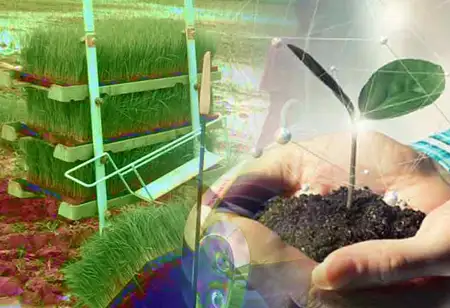Thank you for Subscribing to Agri Business Review Weekly Brief
AI-Powered Greenhouses for a Sustainable Future
AI is transforming smart greenhouses by optimising climate control, automating irrigation, and enhancing energy efficiency.

By
Agri Business Review | Thursday, July 25, 2024
Stay ahead of the industry with exclusive feature stories on the top companies, expert insights and the latest news delivered straight to your inbox. Subscribe today.
AI is transforming smart greenhouses by optimising climate control, automating irrigation, and enhancing energy efficiency. These advancements minimise waste, boost crop yields, and ensure sustainable practices.
FREMONT, CA: Artificial intelligence (AI) transforms traditional greenhouses into advanced, automated environments that optimise crop-growing conditions. AI boosts crop health and yields while promoting sustainability, facilitating predictive maintenance, customised growth strategies, and efficient use of renewable energy sources. These AI-driven insights lead crops to create varieties tailored to specific growing conditions and market needs.
Climate Regulation: Smart greenhouses leverage AI to maintain optimal climate conditions throughout the greenhouse and continuously monitor environmental parameters, including temperature, humidity, and light levels. AI algorithms analyse data to create the ideal growing conditions for different crops. The AI system can activate the cooling mechanisms of ventilation fans. Its light levels are too low, and the lighting turns on automatically. This precise control ensures that plants are stressed by fluctuating conditions, leading to healthier growth and higher yields.
Automated Irrigation Systems: The AI-guided automated irrigation systems ensure that plants receive the correct amount of water at the right times. These systems use soil moisture sensors to monitor the water content in the soil through sensors to detect if the soil moisture level is below the desired threshold. The AI system triggers the irrigation process and prevents over-watering and under-watering, which can harm plant health. By delivering water precisely where and when needed, AI-driven irrigation systems improve crop quality and yield while conserving water and energy.
Energy Efficiency: Greenhouses often rely on manual adjustments to climate controls, leading to inefficient energy use. AI systems optimise energy consumption by making adjustments based on current conditions. They can heat systems only when necessary or coordinate the natural ventilation and shading systems to reduce the need for artificial cooling. By optimising these processes, AI helps reduce the energy footprint of greenhouse operations, making them more sustainable and cost-effective.
Predictive Analytics and Maintenance: Employ predictive analytics to predict potential issues before they become critical by analysing historical data and identifying patterns of equipment failures, pest outbreaks, or nutrient deficiencies. If a sensor detects an unusual drop in humidity, the AI system can alert the greenhouse manager to check for leaks or malfunctions in the irrigation system. This approach allows for timely interventions, minimising crop losses and ensuring continuous optimal growing conditions.
Customised Growth Strategies: AI enables the development of growth strategies for different plant species with unique light, temperature, and nutrients. AI systems can customise these parameters according to each plant's requirements. It helps enhance growth and productivity by adjusting the intensity and duration of light based on the plant's growth stage. It ensures that the plant receives the exact conditions it needs at every phase of its development, improving performance and resource efficiency.
Renewable Energy Sources: Many smart greenhouses are integrating AI with renewable energy sources to enhance sustainability and manage the use of solar panels, wind turbines, or other renewable energy sources to power greenhouse operations. By analysing weather data and energy consumption patterns, AI can optimise these renewable resources, reducing reliance on non-renewable energy and lowering greenhouse gas emissions, supporting a more eco-friendly approach to greenhouse management.
Data Analysis and Reporting: AI provides advanced data analysis and reporting capabilities, giving greenhouse managers further insights into their operations. AI systems can generate detailed reports on various aspects of greenhouse performance, including crop health, energy usage, and resource consumption. These insights help managers make informed decisions about operational improvements, identify trends, and track the effectiveness of different strategies. Enhanced data analysis supports continuous optimisation and drives better overall performance in greenhouse management.
Crop Breeding and Genetic: AI enhances crop breeding by analysing extensive datasets on plant genetics and growth patterns to identify desirable traits and predict the performance of various genetic combinations, accelerating the development of new plant varieties. These AI-driven insights lead to crops with improved yields, disease resistance, and adaptability to diverse environmental conditions, creating varieties tailored to specific growing conditions and market needs.
By optimising technologies and energy usage, AI minimises waste and enhances sustainability, enabling customised growth strategies that ensure optimal plant development. Advancements are becoming more innovative and productive, setting the stage for a more creative and eco-friendly future in agriculture.





